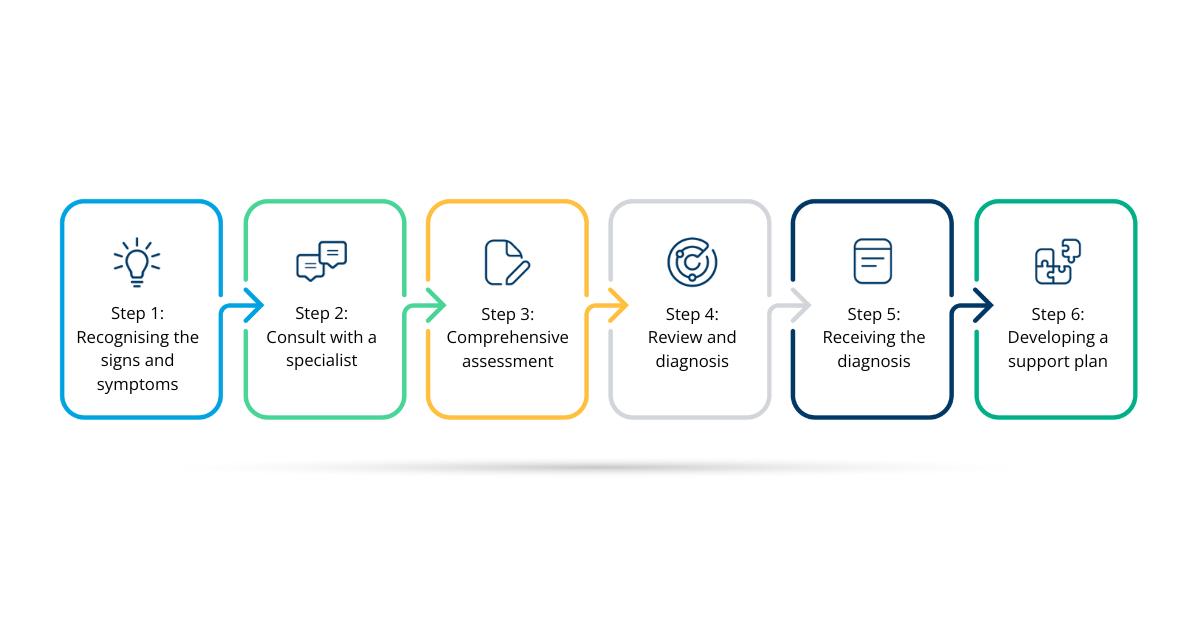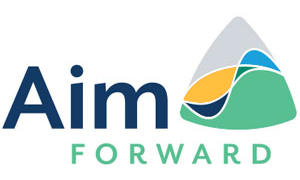What is Dyslexia
Dyslexia is a specific learning difficulty (SpLD) caused by a neurological difference. This means there is a difference in the way the brain works between dyslexic people and non-dyslexic people. It can cause difficulties in reading, writing, spelling, memory, concentration, organisation and communication. More than 6 million people in the UK are thought to have dyslexia – that’s around 10% of the population. Many people with dyslexia may not have received a diagnosis. If you’re wondering how to get diagnosed with dsylexia, we’re here to help.
Getting a diagnosis of dyslexia can be an important step toward better understanding yourself and getting the right support. A diagnosis can bring clarity and open doors to helpful resources and accommodations. At Aim Forward, our fully qualified assessors can provide diagnostic assessments to determine if you have dyslexia.
In this blog, we’ll walk you through how to get diagnosed with dyslexia in 6 key steps, and how we can support you.

How to get diagnosed with dyslexia: 6 steps
Step 1: Recognising the signs and symptoms
Before you book your diagnostic assessment to test for dyslexia, it can be helpful to understand what the signs and symptoms are. These can vary from person to person but often include:
- Challenges with reading, including slow and inaccurate reading
- Difficulty with spelling and writing
- Challenges with phonological awareness (recognising sounds in words) and
- Decoding words (using knowledge of how letters sound to form words).
- Lower reading comprehension (understanding what you have read).
- Difficulty with organising thoughts in writing
- Challenges recognising words by sight
- Family history of dyslexia or reading difficulties
Dyslexia is still poorly understood, and it has been suggested that dyslexia exists on a spectrum. This means dyslexic people will have different experiences, symptoms and coping mechanisms. You may find you have some of the signs and symptoms, but not all of them. You might experience them some of the time or all of the time. It’s important to remember that your experience will be unique to you.
At Aim Forward, your unique and personal experience is always centred in our assessments. You can rest assured that our friendly assessors will always listen to you and your needs to create personalised strategies for success.
Step 2: Consult with a specialist
The next step in how to get diagnosed with dsylexia is to consult with a company offering diagnostic assessments. Diagnostic assessments can only be carried out by a fully qualified assessor. At Aim Forward, we offer these assessments:
- remotely over video call
- face-to-face at our offices in Yorkshire
Our specialist assessors are accredited and have extensive training in specific learning difficulties like dyslexia. All our assessors are friendly professionals who will guide you throughout the process. You can discuss any concerns with us and provide details about your experience at home and in educational or workplace settings.
Step 3: Comprehensive assessment
Your dyslexia diagnosis can only be made after a diagnostic assessment with a specialist. You’ll be asked about your background and experiences and to complete some tasks. At Aim Forward, our assessments usually include:
Interview and history: Your specialist assessor will ask for information about your developmental milestones, family history, and relevant medical conditions.
Observation: The assessor will observe your reading, writing, and spelling skills to help identify dyslexia-related difficulties.
Standardised tests: Standardised assessments and diagnostic tools evaluate your reading and phonological skills (how well you can recognise and process sounds in words).
Reading assessment: You’ll be assessed on your reading accuracy, fluency, and comprehension (understanding what you have read).
Spelling and writing assessment: Your spelling accuracy and writing skills will be evaluated
Phonological awareness assessment: Your assessor will evaluate your phonemic awareness, which involves recognising and manipulating the sounds in words.
These tasks are not pass or fail and nothing to worry about. They are designed to highlight indicators of dyslexia, your cognitive profile and your strengths and weaknesses.
Step 4: Review and diagnosis
Once your assessment is finished, your assessor will review and analyse the information to determine whether you meet the criteria for a dyslexia diagnosis. The diagnosis is based on specific criteria outlined in approved diagnostic assessment tools.
Step 5: Receiving your diagnosis
Whether or not dyslexia is confirmed, you will receive a written report that will detail if you have dyslexia or not, along with key recommendations for you in your work, study or day-to-day life. This diagnosis is a valuable tool that provides clarity and allows access to support and accommodations.
If you choose to work with us for your diagnostic assessment, you’ll receive your personalised report 10 days after you complete the assessment. The report will include:
- Summary of the report
- Diagnostic decision
- Your cognitive profile
- Your strengths and weaknesses
- Recommended sources of additional information or support
Our dedicated team will always be on hand to support you and help you to understand your report.
Step 6: Develop a support plan
Once you receive your diagnosis and report, you can contact your HR at work, SENCO at college, or the disability team at university to develop a personalised support plan. This plan may include:
- Educational interventions and support, including assistive technology/AI and exam access arrangements
- Workplace interventions and support, such as text-to-speech software or flexible deadlines
- Accommodations in educational or workplace settings, like exam access arrangements or modified workstations
- Strategies for improving reading and writing skills, such as guided reading or peer reviews.
What are the benefits of a dyslexia diagnosis?
Receiving a diagnosis of dyslexia can feel like opening a door to greater understanding, relief, and empowerment. We understand that the process may seem daunting at first, and we’re here to guide you every step of the way. We’ve worked with thousands of neurodivergent people and many of them feel that their diagnosis was an important step toward unlocking the support and accommodations that help make life easier. Whether it’s in education, work, or everyday tasks, knowing more about how your brain works helps you find the tools and strategies that best suit you.
Minnah came to us for a diagnostic assessment to find out if she was dyslexic. Here’s what she said about her experience:
“My business is thriving and I’m thriving with it. The understanding, support and tools provided by Aim Forward have elevated both my business and my sense of who I am.”
Finding solutions to shape your future
At Aim Forward, we specialise in comprehensive assessments and support for dyslexic people. Our team of experienced professionals can accurately diagnose dyslexia and provide personalised recommendations to help you navigate your educational and professional journey successfully. If you think you, your child or someone you know may be dyslexic, a professional assessment is a proactive and empowering step towards excelling in everyday life.

